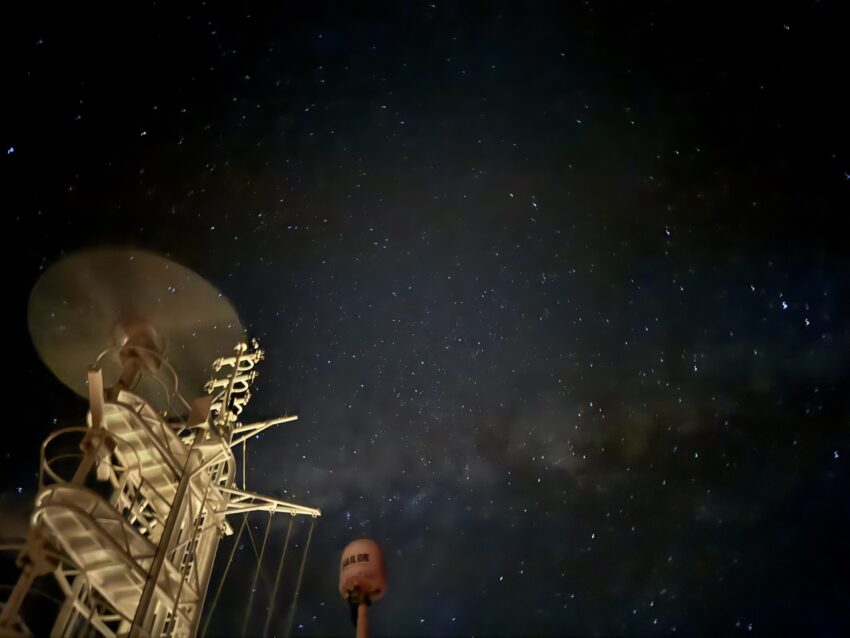Today’s Chronicle can be found here.
For many, sea days on an expedition vessel are an exercise in relaxation and learning. Well, we have the learning portion down – though homework has proven to be a many-headed monster that cannot be slain, merely subdued for a day or two at most.
The adults had homework of their own – the 2027 / 2028 Silversea cruises have been released, and we have decided to put a hold on the new Osaka to Manila expedition cruise, as it lines up with our planned trip to Borneo and with SeaTrek Bali later that summer.
Unfortunately, due to technical issues with Silversea’s website we ended up accidentally placing a hold on not two but seven cabins. And there’s no easy way to release them back to the public. So if you’re looking for cabins on that particular cruise, be reassured – they’ll be available shortly!
(And do let us know if you might be interested in joining us on this – early indications that those travelling with us would be eligible for a 5% onboard booking discount, and we are also seeing if we can arrange some kind of shipboard credit for a group booking. Or feel free to just make your own booking and we’ll see you there!)
We did attend Sarah’s lecture on (Under)Water Worlds:
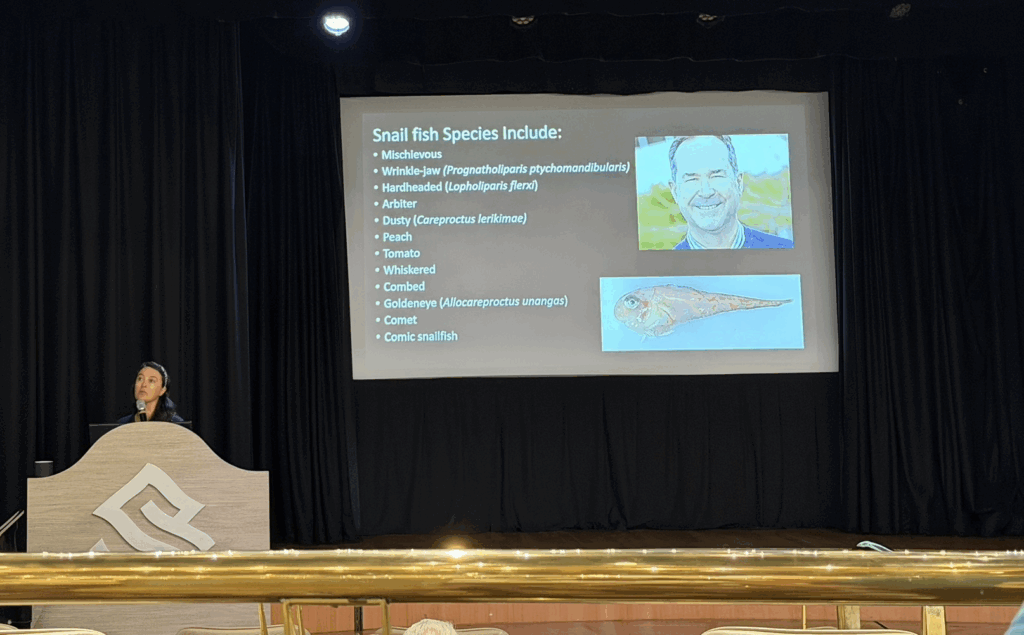
I learned that snailfish are some of the deepest living fish, able to survive (and thrive) at almost 7000 metres deep. In order to survive at those pressures they have eight copies of the DNA repair gene and five copies of a protein stabilizer and pressure protector genes making them of interest to longevity scientists. I also learned that glass sponges are the oldest living organisms on Earth, some individuals have been alive for the past 15,000 years.
The most fascinating and concerning part of Sarah’s lecture had to do with polymetallic nodules. These are rich in minerals (Ni, Cu, Mn, Zn, etc.) that are of interest for deep sea mining however they play an extremely important role in seawater electrolysis and provide oxygen to the deep ocean depths. There is enormous concern that if these nodules are removed we may end up doing immense and irreversible harm to all ocean life (and therefore our own) so a number of countries have proposed a moratorium on mining them.
Then time for trivia – Soraia had all the various teams contribute questions this time, which was fun but also slowed down the process considerably. I’d perhaps suggest taking the questions one day and presenting them the next day, but that’s essentially nitpicking – my son truly enjoyed being able to submit a Greek mythology question, as those have been lacking this voyage.
There was also a spot of drama when one team submitted a six-point question, and another team protested that it would give the submitting team an unfair advantage. (The offending question was ultimately struck from the record.)
The rest went smoothly, however. I was pleased that our team knew the exact length of the Silver Cloud (156.4 metres) and that the Granny Smith apple originated in Australia, while we learned that Indonesia is the number one exporter of pineapples and that the cerebellum is the part of the brain responsible for balance. Our 10 / 16 score was sufficient to take second place.
Lunch at La Terrazza where I made myself a very credible ribeye and baguette sandwich with French camembert. I then took my first nap of the trip, while the kids went for a swim in the still-enjoyably-sloshy pool. Then back to the room where my son and I finished off my daughter’s very first adventure as the dungeon master – she did a fabulous job!
Today’s thought experiment – this is around the time that we will be coming closest to Point Nemo, the spot in the Pacific that is furthest from any land. Named after Jules Verne’s Captain Nemo, it’s roughly triangulated between Ducie Island (Pitcairn Islands) to the northwest, Motu Nui to the northeast and Maher Island (Antarctica) to the south. “Closest” is a relative term – we will still be roughly 2,500 km away even at our closest point.
Also highly recommend the suspense series “The Head” for its remote settings, including Antarctica and Point Nemo.
Dinner with Expedition Guide Nick tonight – we asked him about his time in the Canadian Arctic aboard the Endeavour, and he highly recommended both the Lower Savage Islands and Lady Franklin Island as spots to visit. (We’re still undecided as to whether we would visit the Canadian Arctic via land or sea – hoping to go there in the summer of 2028.)
Stargazing tonight! We showed up on Deck 9 just before 9:30 pm with our Quietvoxes and cameras in hand. (For those not familiar with the Quietvox, it’s a remote headset that you can wear during tours so that the operator doesn’t need to shout – Silversea typically includes them in all expedition cabins, however this is only the second time we’ve ever used them.)
It was a bit frantic as everyone was attempting to get underway – not everyone had their Quietvoxes, and several passengers had forgotten to turn off their camera flash. But Nick, Alex and the rest of the guides did a great job of getting everyone situated. And we got some lovely photos:
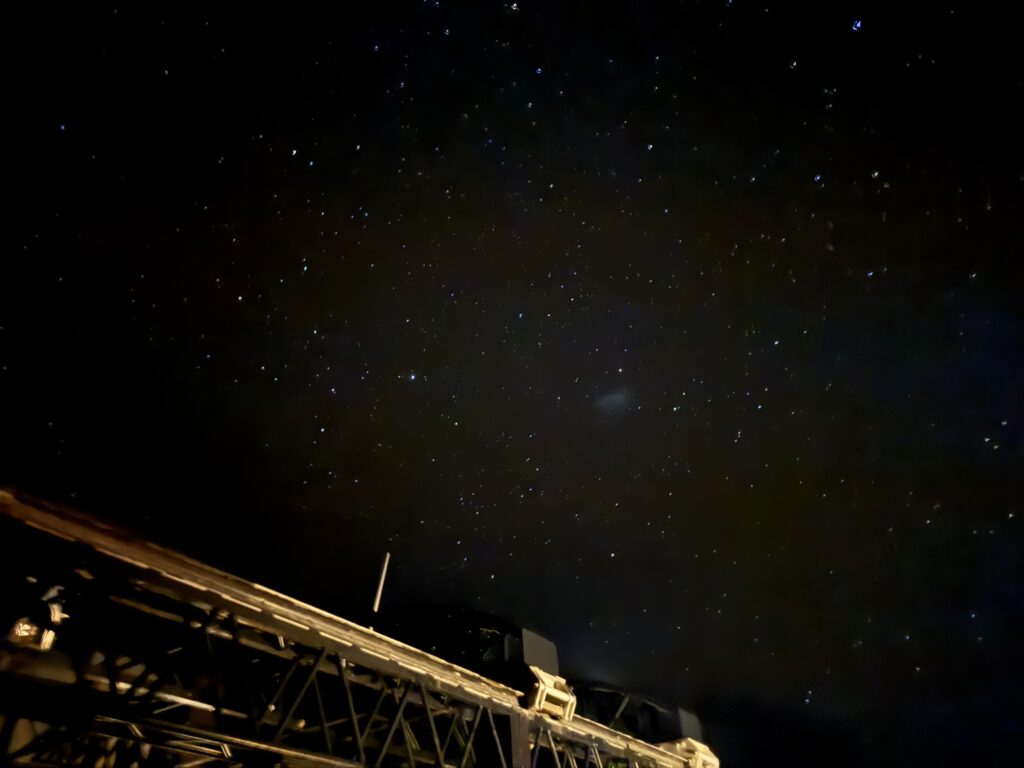
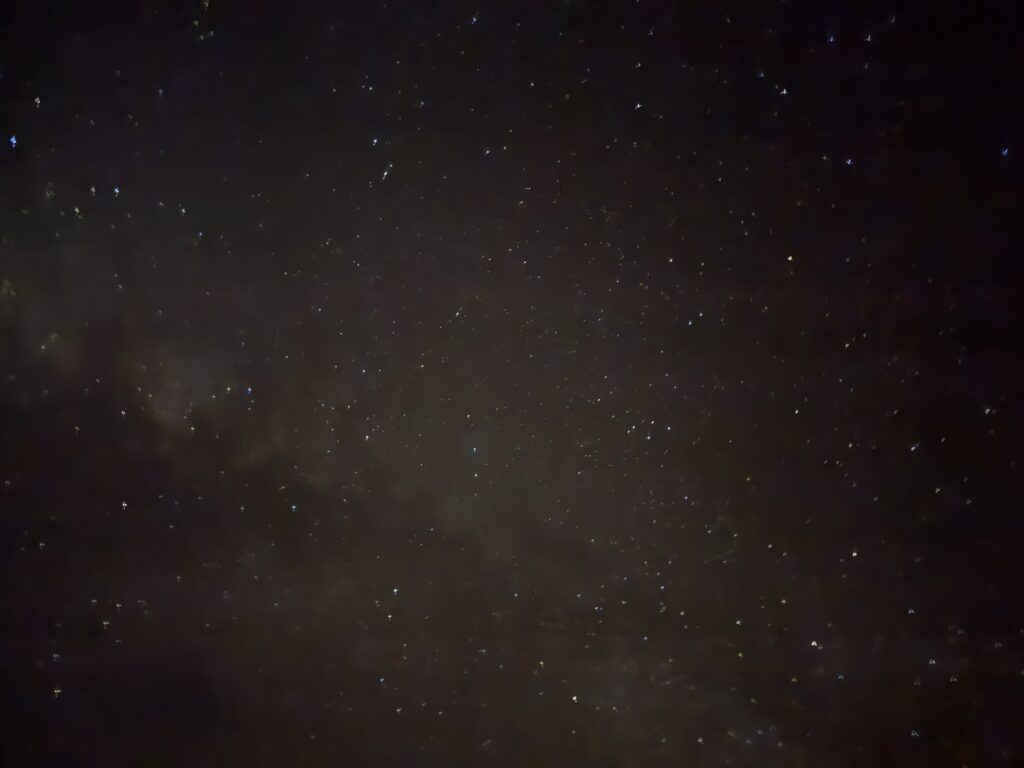
Big thanks to Bogdan for that ‘night mode’ photography lesson, which allowed us to get some extra-long exposures of the night sky. It’s challenging to do long exposure on a moving ship, but still beautiful to see the Milky Way above us:
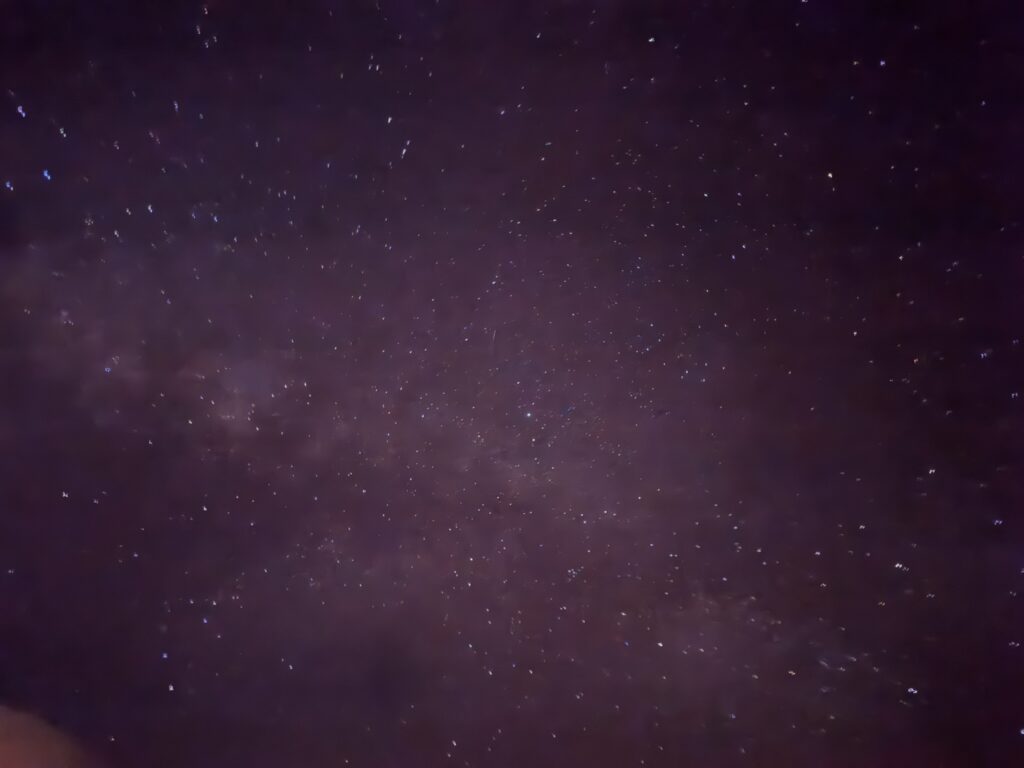
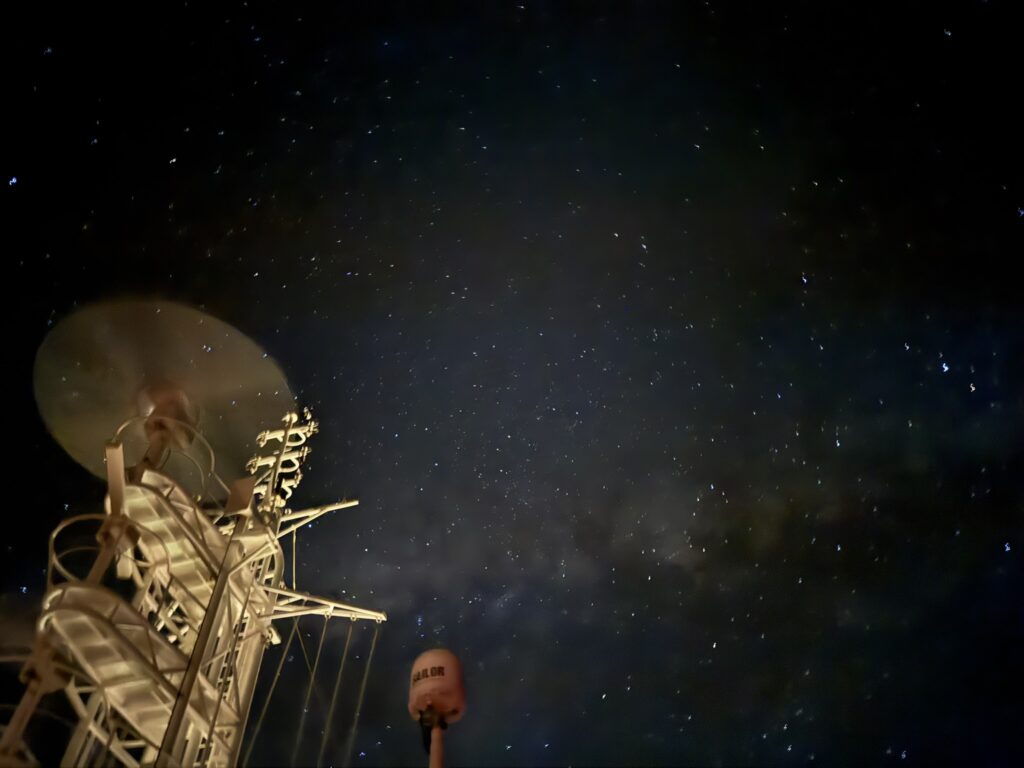
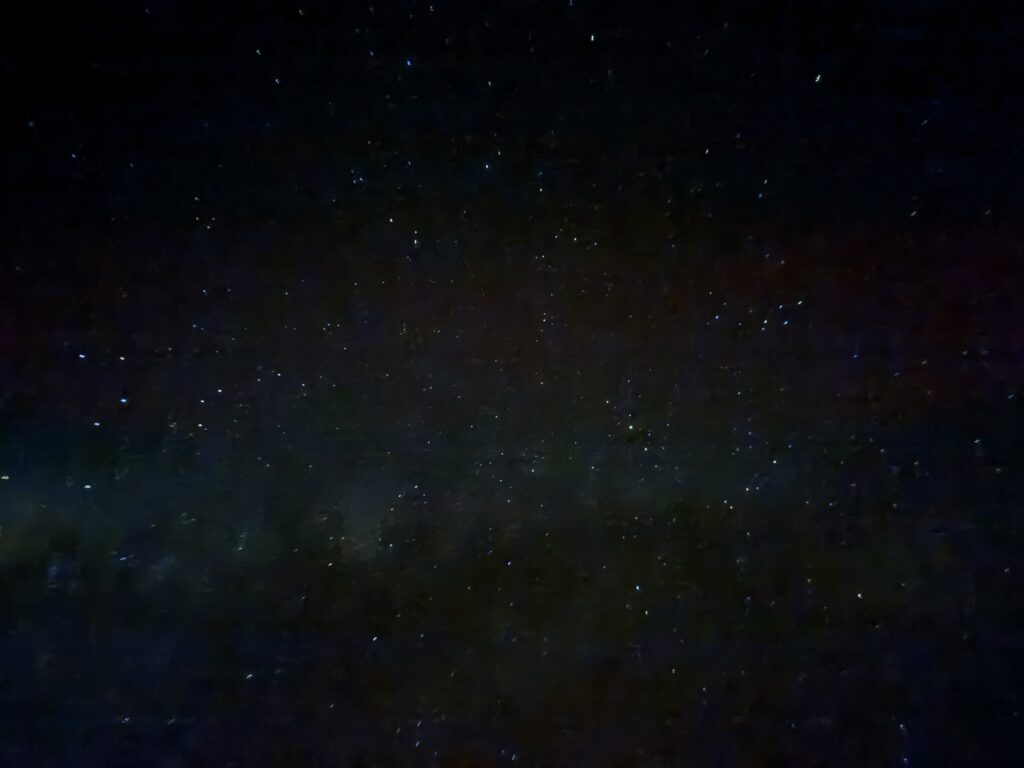
Hope to try this again while we’re in the Atacama!
